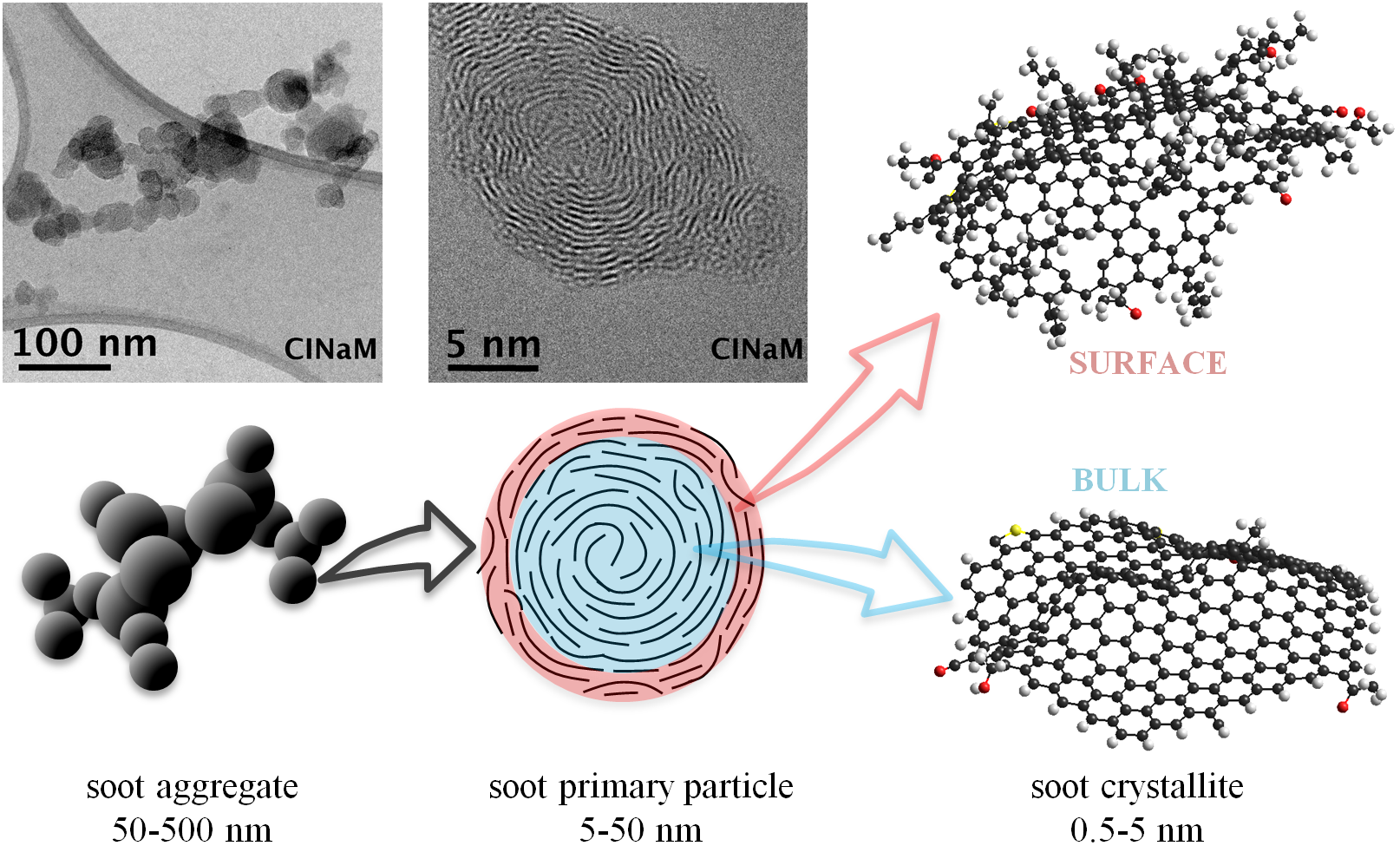Airplanes and climate change
Understanding aircraft soot provides insight for climate models
The long vapour trails that follow an aircraft’s exhaust are one of the largest sources of uncertainty in climate models, but a nanoscale look at their structure provides new insight into global environmental processes.
Condensation trails, more commonly known as contrails, follow aircrafts as water condenses into ice crystals around engine soot. In a recent study, Drs. Phillippe Parent and Daniel Ferry of Aix-Marseille Université revealed the unusual structure of aircraft soot, which helps explain how contrails contribute to climate change, especially improving models of light scattering in the atmosphere.
“We are convinced that understanding properties of matter at the molecular level will help us understand huge effects at the global scale of our planet,” says Ferry.
Aircraft soot is primarily made of tiny sheets of carbon, much like a pencil’s graphite, which is a structure that normally repels water. That ice crystals form on soot particles is a bit unexpected, but can be understood with insight into the molecular structure.
X-ray studies at the Canadian Light Source revealed that aircraft soot particles have an onionlike structure, with a bulk of fairly regular carbon crystals surrounded by thin sheets of irregular crystals full of holes and other defects. The defects also make it easier for water to bond to the crystal.
“It was very important for us to gather these results at the CLS. We need the chemical and structural properties in order to determine the global impact on the atmosphere of soot particles,” Ferry says.
The team hopes to study how the particles age over time, as small soot particulates can stay in the atmosphere for extended periods of time, and could have a further environmental impact.

Acid Base Mini Rockets






